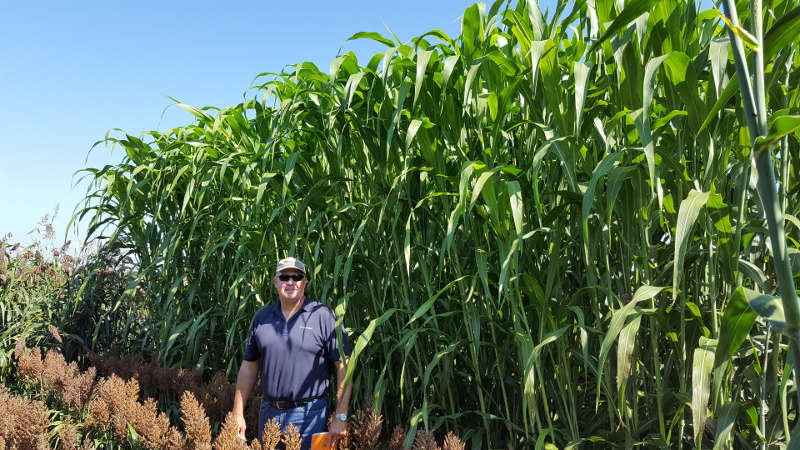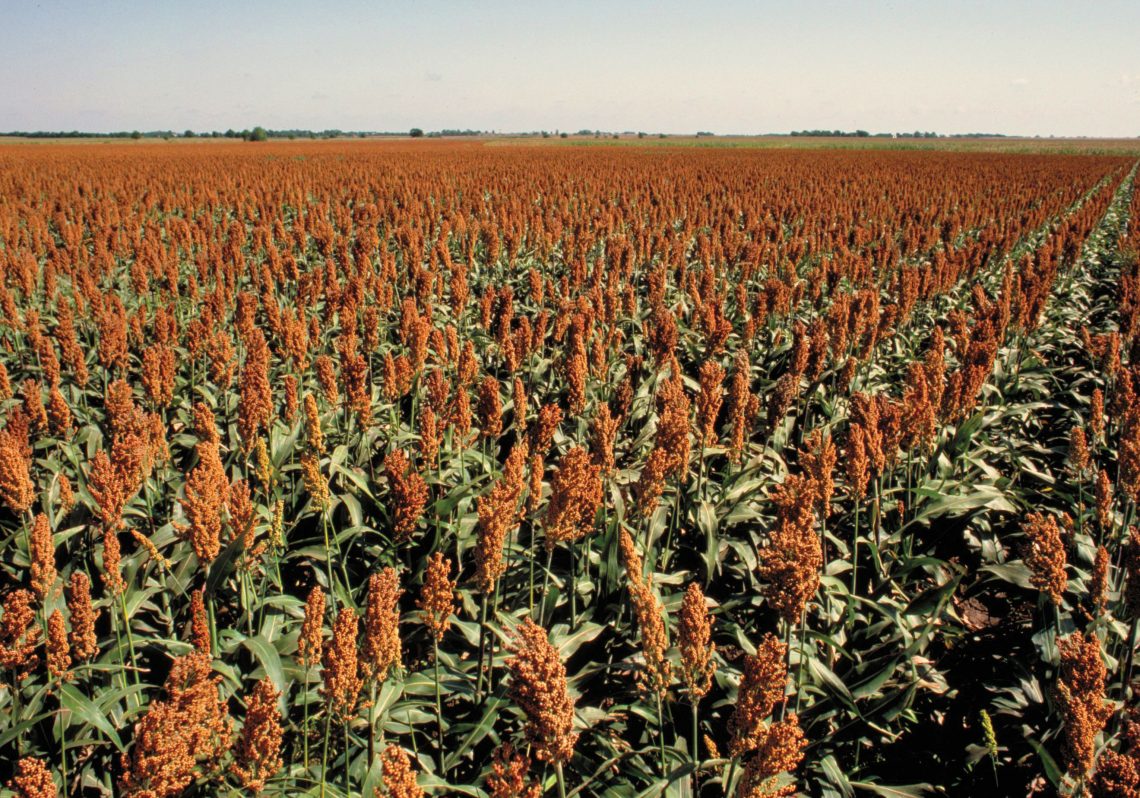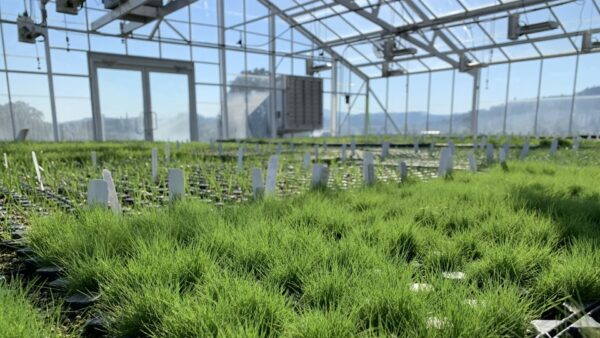Research and consumer interest in health foods brings new market potential to an old world cereal grain.
Sorghum is a high-yielding, nutrient-use efficient, and drought tolerant crop that can be cultivated on over 80 per cent of the world’s agricultural land. Its geographic distribution spans temperate to tropical climates, and its rich genetic diversity allows for multiple specialized uses (including grain, forage and an increasing number of food applications).
Sorghum requires fewer nutrient inputs and far less water than comparable crops and its unique biology makes it possible to produce good yields even in difficult conditions. As water resources become more constrained and as growing populations require more productivity from less arable land, sorghum is a crop poised to meet the growing needs of both traditional agriculture and bio-industrial processes.
Sorghum provides a natural assortment of products and uses: Grain sorghum, with its high starch content, is used as an energy source for animal feed or biofuels. In many parts of the world, it is a staple food crop and is commercially used in brewing and a range of gluten-free products. Forage sorghums are primarily used for animal feed.
As sorghum tolerates drought, soil toxicities and a wide range of temperatures, sorghum has mostly been consumed by those living in low-income countries where the environment tends to be unfavourable to many other grains. But as researchers and food scientists discover new uses for the grain, demand is increasing and experts say there’s tremendous opportunity for growth, stemming from the health food market.
Unique Aspects
One of the unique aspects of sorghum is that it’s a gluten-free crop, providing an alternative to the 1.5 million people who suffer from Celiac disease. As such, sorghum flour serves as a wheat-gluten substitute in baked goods, without a big loss of flavor or texture. Its mild flavour and light color also make it an ideal substitute. Food companies are using it in cookies, cakes, crackers, muffins, cereal and pancake mixes. More and more contract growers are beginning to react to the demand of gluten-free products and planting specific sorghum varieties for food-grade sorghum, based on demand from brand distributors.
Additionally, sorghum breeders are identifying genotypes and producing hybrids that have relatively high levels of antioxidants. These antioxidant levels are comparable to and above levels one could find in fruits and vegetables that are often promoted as heart healthy and high in antioxidants. For example, sorghum has more antioxidants than blueberries and pomegranates. It is the tannins, associated with some darker-colored sorghums, which are responsible for the high antioxidant levels.
Past studies also indicate that sorghum can reduce cholesterol, and that it has high levels of phytochemicals, which are known to promote heart health and combat stroke, cancer and neurodegenerative disorders — all the more reason to encourage cultivation of the ancient cereal grain. And the other component people are interested in, specifically with the black sorghum, is its natural color, using it in food processing to get away from artificial colors.
Sorghum flour can be used for frying, resulting in a crispy texture without becoming sticky. Other sorghum-based products hitting the market include pet food, beer and “healthy” snack foods. Some of these markets are just in their infancy, encouraging independent research in specific areas, such as sorghum-based dog food for obese pets.
SUBHEAD: Sorghum in Europe
With the majority of Europe’s row crop production located in northern climates and with shorter growing seasons, growers may not believe that sorghum is a good fit for the geography. Sorghum’s origin is as a subtropical crop, and for it to move north, away from the equator, extensive global breeding activities are required to develop the needed adaptations.
“As a company focused solely on sorghum, we are committed to advancing the crop into more temperate regions through the efforts of its industry-leading research and development program,” says Charles Miller, vice-president of Business Development & International Sales at Chromatin.
“In northern regions, the demand by farmers for alternative crops for silage and grain are growing. Sorghum is extremely water-use efficient and tolerant to drought. There is going to be an increased space for sorghum in the Northern latitudes, and we are committed to developing hybrids to meet that need.”
Steady Increase
Trends show that over the last 10 years, sorghum production in the EU has steadily increased as growers and end-users recognize sorghum’s advantages.
“Ten years ago, farmers planted 90,000 hectares of sorghum, with the majority of that in France and Italy,” says Miller. “Today, about 150,000 hectares of sorghum is planted in the EU. That’s a growth of approximately 65 per cent. Farmers are definitely seeing the potential of the crop.”
Miller adds that Ukrainian farmers were growing 50,000 hectares a decade ago. It’s now close to 200,000 hectares, up more than 400 per cent. On a global scale we’re seeing a similar expansive picture. The area planted to sorghum worldwide has increased by 66 percent during the past 50 years, and yield has increased by 244 per cent.
“As a result of investment and time, our sorghum hybrid yields have steadily improved over the last 10 years” says Scott Staggenborg, director of product portfolio and technology advancement for Chromatin. “Our breeding program has produced an increase in yields every year, and we have seen some fairly rapid increases in yield in our new hybrids because that’s been the focus of our breeding programs.”
Breeding New Sorghum Varieties
The pick-up in the new markets didn’t happen overnight. For many years, sorghum was under-represented and relatively unknown, but consumers and buyers are now taking more notice.
But before reaching the market, seed companies are typically testing their potential varieties in a number of different environments to see which varieties perform best in each of the various environments.
“Over the last three years, we have tested sorghum varieties in a number of climates, including regions of Italy, France, Germany and Ukraine. The varying conditions range from Mediterranean environments where rainfall is plentiful in the spring and planting conditions are ideal, turning hot and dry during the summer — to the North, where the spring is cooler and there is potential for drought late in the season,” says Staggenborg.
“With an industry average of 10 to 11 years of breeding and development to create new sorghum hybrids to fit varying conditions, we have developed a proprietary method that significantly reduces new hybrid development,” he continues. “We owe that success to a large genetics and breeding team and state-of-the-art facilities committed to sorghum development. Our biggest concern is how fast we can move improved hybrids into the market, because we know that farmers want the latest innovation and highest yielding hybrids out there so that they can stay competitive,” according to Staggenborg.
Genetic Diversity
The research efforts of Chad Hayes, a sorghum breeder and researcher with the U.S. Department of Agriculture’s Agricultural Research Service, focus on increasing this quality through traditional breeding and traditional crosses using USDA’s sorghum germplasm bank, which contains more than 40,000 different types of sorghum. Because of its natural hardiness, sorghum grows throughout the world in wide-ranging environments. This high level of variety provides a broad genetic base for researchers to work from.
“We can look for DNA markers for specific traits within the sorghum species and apply those to breeding and seed development programs without having to borrow them from other plant species,” Hayes explains.
Sorghum breeding companies are searching the world for germplasm, and drawing interesting varieties and lines from Africa, Asia, Australia and the United States. “Our company also licenses germplasm that demonstrates desirable traits and resistances for its breeding program. You need as wide a base of germplasm as you can get,” said Staggenborg. “We have accessed germplasm from global public programs and the USDA breeding program. We typically select those focus traits that we can then combine with already existing germ plasm to broaden genetic diversity in our breeding program and create new hybrids.”
He continues: “In addition to a traditional breeding program, we’re also known for our molecular biology program. We have a molecular biology program and marker assisted breeding program that allows us to use technology to screen material faster and some of our programs focus on disease resistance in grains and forages. We use our marker assisted breeding to aid our breeders in hybrid development.” He adds that by utilizing molecular technology, that is proprietary to Chromatin, it allows the company to create new and unique sorghum hybrids faster, and providing farmers with the latest hybrids for their specific geographic area and need.
Targets
Plant breeders and food scientists are teaming up to create some of these new products. “With a tremendous amount of corn crops in Europe used for silage, one of our company’s key breeding targets is to develop new hybrids with high digestibility. We’ve created new hybrids that are currently being tested in Europe, and we are seeing good results in those trials,” says Miller.
Sorghum research has provided advancements in lodging resistance, a challenge for almost any crop growing in short-season environments. Cool and wet conditions are ideal for root rot, and when the disease lingers and if the plant is stressed late in its life cycle, these diseases can invade the stalk and can cause stalk rot.
“We focus on both genetics as well as other methods to make sure we get plants out of the ground fast while roots develop healthy and disease free because strong roots and stalks reduce lodging,” says Staggenborg. “We also work with the stay-green trait, which allows leaves to stay green under stress and produce photosynthates that improve stalk strength, even under stress. We have this trait in just about every aspect of the breeding program because this is a common challenge for sorghum. The stay-green trait improves yield and helps reduce lodging in the plant.”
The Health and Pet Food Aisles
Consumer perception is changing, particularly in the food and ingredients markets. For a long time, sorghum was overlooked, but this is changing. Consumers and buyers today are seeing sorghum as a healthy food with many benefits.
The consumer food market, a relatively new area of sorghum expansion, is taking this crop to new heights, not only for its many nutritious qualities, but also its genetic qualities in terms of antioxidants, high protein levels, lower fat, high fiber and the absence of gluten. Sorghum is now used in various applications, such as syrup and molasses, which come from the stalk of sweet sorghum. The grain is also used as a bran and can be popped, like popcorn but smaller.
Sorghum’s use isn’t limited to human nutrition, though; it’s long been used as a livestock feed and more recently picked up steam in the pet food market. During the past decade, the pet food market has taken to sorghum for its nutritional benefits and helped to further sorghum research. Sorghum is now considered a superfood in modern pet food. It is rich in antioxidants, has a low glycemic index, is gluten free, and has measurable dietary fiber. Sorghum also has quality proteins when complemented with sources rich in lysine and processes well into pet food applications.
In addition, sorghum offers better digestibility and fiber for pets, such as cats and dogs, and helps animals maintain a good blood sugar balance. Although this niche market is relatively small compared to the larger livestock markets, sorghum provides a cost competitive and nutritious feed ingredient for pet food companies who are using the grain for carbohydrate blends in dog and cat foods. According to the Sorghum Checkoff in the US, sorghum is now used by more than 10 pet food companies in more than 135 products.
Future Demand
While sorghum is used in many different applications throughout the world, there is still room to grow.
Normally it takes up to 10 years to get a new variety to farmers’ fields, and due to producer and seed industry investments, some of the high-quality genetics are now coming to market, which will increase sorghum’s viability and adaptability today and into the future. Maintaining export interest and developing new applications are key to growing the sorghum market.
Although sorghum is considered an ancient crop domesticated in Africa thousands of years ago, this grain continues to forge ahead in the new millennium. Sorghum’s tenacity to remain a staple crop around the world is largely thanks to its hardiness, market versatility and high-quality seed.
Perhaps a diamond in the rough and a crop that deserves more glory than given, sorghum offers many benefits, and new uses continue to be explored. It seems clear that producers and users of sorghum in Europe should be more familiar with this crop so that they can take advantage of some of the unique characteristics of sorghum.












